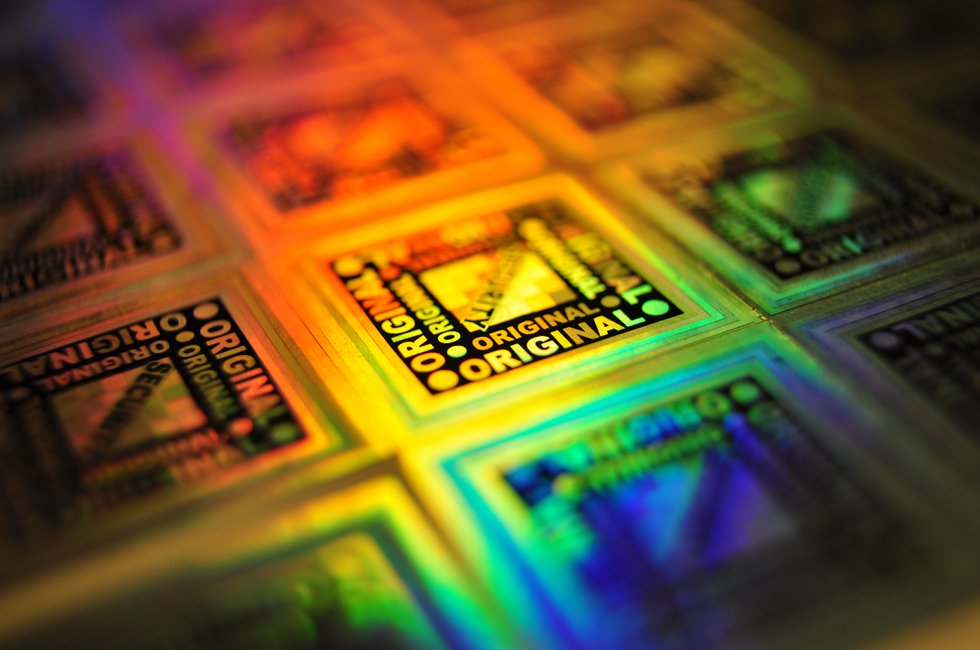
svrhologram - stock.adobe.com
Hologram Label
The global hologram market is currently valued at around USD 44 billion and is estimated to reach USD 67 billion by 2030*. In the international packaging sector, where holograms are primarily used to protect products against counterfeiting and provide stunning visual on-products designs to catch the eye of the consumer, usage continues to widen the scope of the market and we are seeing a new generation of sustainable holographic films coming through which provide a variety of flexible eye-catching applications.
In turn, this increases the creative visual opportunities for sustainable packaging and print designers to reinforce brand identities, catch the customer’s eye and reinvigorate mature or aging pack designs. Here, holographic film packaging with its striking design, increases the attractiveness of a product on a retailer’s shelf, allowing it to stand-out and dominate its competitors. These films can be used for flexible packaging or paper-carton laminations in the cosmetic, food, cleaning supplies, automotive, or CD/DVD industries.
Hazen Paper developed its sustainable Envirofoil® to directly serve the need for a product with eye catching allure as well as being recyclable as paper. Envirofoil® substrates are manufactured with less than one per cent of the aluminium of traditional foil laminate or film laminates and has multiple recyclability certifications to display to brands and consumers. What’s more, Envirofoil® reuses the film carrier multiple times and at the end of its lifecycle it is recycled. This is a paramount advancement compared to traditional hot and cold foiling.
Added protection
The product, which allows packagers to work in partnership with designers and printers, enables holographers to develop holographic effects including Fresnel Lens that realise a customer’s ultimate creative vision, optimised for printer capability. Hazen Envirofoil® is available in silver, or one of their over 1,350 registered holographic patterns. With Hazen’s vertically integrated operation, it is able to deliver tight production control and fast turnaround. Envirofoil® is currently featured on singer Billie Eilish’s perfume.
Another example, cold foil materials specialist K Laser Technology’s new sustainable substrate products Viridian Eco-Paper and Eco-Paperboard, which feature 150 holographic patterns, can be used to create a range of folding cartons, mailers, hang tags, postcards and labels. The key lies in sustainability, with the products allowing foil designers, product designers and printers to have the best of both worlds: green packaging with stylish holographic effects. Pre-printed with a registered hologram, Viridian Eco-Paper and Eco-Paperboard enable users to create premium designs by overprinting the substrate with white ink using various screens of opacity to cover, reveal and colourise the holographic underlayer in a single pass.
Elsewhere, Eviosys, which has developed smart sustainable packaging that protects, promotes and preserves brands, has partnered with foil producer Kurz to develop a hot stamping technique with unique holographic effects – an exciting development that makes it possible to create original colour reflection packaging effects and 3D illusions, bring added impact and vitality to brand enhancement.
Alongside the challenge of capturing the attention of consumers busy browsing retail shelves to secure sales for their products and grow market share, manufacturers have to protect their brands from ever-resourceful counterfeiters and criminals looking to flood global supply chains with fakes and illicit reproductions.
Here, companies such as India’s Uflex are in the vanguard of tackling the problem with the release of several holography solutions, including a self-adhesive holographic labelling solution, to prevent counterfeiting and enhance aesthetics. Responding to rising cases of counterfeiting, Uflex has integrated Fresnel lens technology in a product labelling solution to provide a premium look through the placement of lenses in the middle and bottom of the label. The lens used on the printed area reflects light at multiple angles providing a 3-D look and feel to the product - the combination of Fresnel lens technology that is reflective from various angles together with striking printing combines to produce an effect that is both visually arresting and instantly recognisable.
The print technology utilises two key features: the first is a registered holographic substrate while the second involves carrying out precise re-registration printing on the same substrate. This makes it almost impossible to replicate, creating a highly effective anti-counterfeiting device for use across FMCG and retail goods sectors.
Holograms for packaging-related security applications that can be authenticated automatically using normal light and mobile phone apps, are also coming to the fore, adding further value in the process. For instance, nano technology engineering specialist IQ Structures has introduced a series of machine-readable holograms that contain unique visual effects. These are almost impossible to replicate because they are based on special nanostructures, offering automated control that is immune to human failure.
Track and trace
This advanced sustainable holographic technology can be used on packaging and integrated with other security features to provide impactful anti-counterfeiting solutions that benefit product manufacturers requiring distinctive, highly visual but cost-competitive design effects combined with strong brand protection.
The technology can also be part of an effective track and trace solution for those companies keen to secure their distribution and supply networks - the holograms are fully machine-readable, so operators can download an app and check that the security features are genuine. Infact, these type of holograms - particularly when used on labelling - are expected to become an ever-increasing way to track a product throughout its life, and the post-life, cycle. The combination of authentication and tracking gives brand owners complete visibility and control from sourcing raw materials through to re-cycling and re-purposing.
Holography also has a role to play in decorating and securing the inner packaging of the product. Any surface that can hold the hundreds of millions of microscopic fringes that control the diffractive colours and depth of the hologram can be converted into a packaging material. Holographic laminate pouches, which are both the container and packaging, are a secure and eye-catching tool here together with holographic shrink sleeves that protect against attempts to tamper with or re-use closures on, for examples, cosmetic and healthcare products.
Counterfeiting, which will always be a global threat and continues to place brands and consumers at risk, must be tackled effectively on a sustained basis to minimise its impact globally. This sees brand owners and their packaging suppliers making the investments to enhance and bring forward anti-counterfeiting plans that feature holograms. In turn, these holograms are becoming ever more integrated with other technologies to create intuitive brand engagement programmes while offering striking and highly visual packaging design, adding even more value to the overall purchasing experience.
* Zion Market Research ‘Holograms Market Comprehensive Analysis, Historical Data, and Forecasts 2023 – 2030’ report 2023
